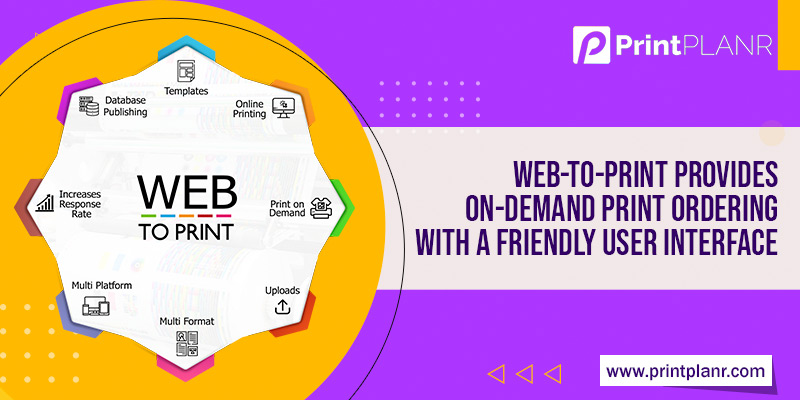Web-Based Printing Software: Disrupting the Printing Industry

This printing industry has undergone substantial changes over the past few years, and the arrival of web-to-printing software is one of the most revolutionary changes to date. This advanced technology bridges the gap between traditional printing techniques and the digital realm, enabling businesses to optimize their operations, enhance user experiences, and offer a notable degree of personalization. As the demand for customized products has grown, web-to-printing technologies have emerged as a crucial resource for print shops and organizations looking to remain relevant in an ever more digital marketplace.
In this comprehensive guide, we will explore what web-to-print software is, how it is transforming the print sector, and the numerous advantages it brings to printing businesses and companies alike. From improving order management and streams to facilitating e-commerce connections, web-to-print solutions are demonstrating essential for success in today's fast-paced business environment. We will also look into important aspects to think about when selecting the appropriate web-to-print solution, as well as the effect of emerging technologies like AI and machine learning on the prospects of this dynamic industry. ### Understanding Web2Print Platforms
Web-to-print platforms serves as a electronic system that permits companies and print providers to offer printing solutions via the web. This technology provides a space for clients to produce, customize, and request print products immediately via the online channel. By leveraging this tool, printing businesses can streamline processes and enhance their service capabilities, facilitating it simpler for users to use printing solutions from any location at any moment.
One of the key features of web-to-print solution features its intuitive design, that permitted customers to create and personalize goods such as brochures, company cards, and banners. This level of flexibility enables a unique user experience, where customers can add their creations or select blueprints to create high-quality products without needing sophisticated design skills. As a result, clients are enabled to manage their printing endeavors, leading to greater happiness and devotion.
Furthermore, W2P systems contain functionalities that significantly boost order management and operation efficiency. These systems support automate processes such as proof approval, order processing, and stock control, reducing the risk for errors and accelerating turnaround times. By optimizing working processes, printing services can better respond to client needs, adapt to changes in the marketplace, and utilize data analytics to formulate educated decisions, in the end arranging themselves for growth in the changing printing industry.
Benefits and Efficiency of Web-to-Print Systems
Web-to-print solutions offer substantial advantages for print shops and companies by streamlining operations and enhancing customer engagement. One of the key advantages is the efficiency gained in handling orders. With Web2Print Management Software unified online platform, customers can quickly place orders, customize products, and upload designs without the need for one-on-one contact with print shop staff. This self-service capability not only speeds up the order process but also reduces the workload on employees, allowing them to concentrate on higher-level tasks.
In addition to improving order management, web-to-print software increases overall productivity by automating various aspects of the printing process. Features such as automated quote generation, order tracking, and inventory management reduce the chances of human error and speed up production times. As a result, print shops can handle a greater volume of orders without compromising quality, ultimately leading to higher profitability.

Furthermore, the combination of web-to-print solutions with online shopping systems significantly improves the customer experience significantly. Customers can access a wide range of tailorable products with ease, making it possible to create custom prints that cater to their individual needs. This degree of customization fosters customer loyalty and encourages repeat business, ensuring that print shops stay competitive in a rapidly evolving industry.
Emerging Trends in Web-to-Print Solutions
The upcoming of web-to-print technology is profoundly shaped by the rise of AI and machine learning. As these technologies advance, they enable more personalized and effective printing solutions. Print shops can utilize AI to analyze customer data and preferences, allowing for tailored offerings that meet specific needs. This customization not only enhances customer satisfaction but also drives sales by presenting customers with relevant products that resonate with their individual tastes.
Another notable trend is the adoption of cloud-based solutions which offer increased flexibility and scalability. As businesses continue to shift towards remote operations, cloud-based web-to-print systems allow print shops to manage orders and workflows from any location, streamlining processes and improving response times. This transition towards the cloud also facilitates simpler collaboration between teams, clients, and suppliers, breaking down geographical barriers and fostering innovation in how print services are delivered.
Sustainability remains a critical focus for the printing industry, with web-to-print technologies playing a pivotal role in supporting green practices. Solutions that incorporate eco-friendly materials and waste minimization processes will become more prevalent as both consumers and businesses demand sustainable practices. By leveraging web-to-print technology, print shops can not only reduce their ecological footprint but also attract a customer base that values sustainability, positioning themselves at the leading edge of industry innovation.
